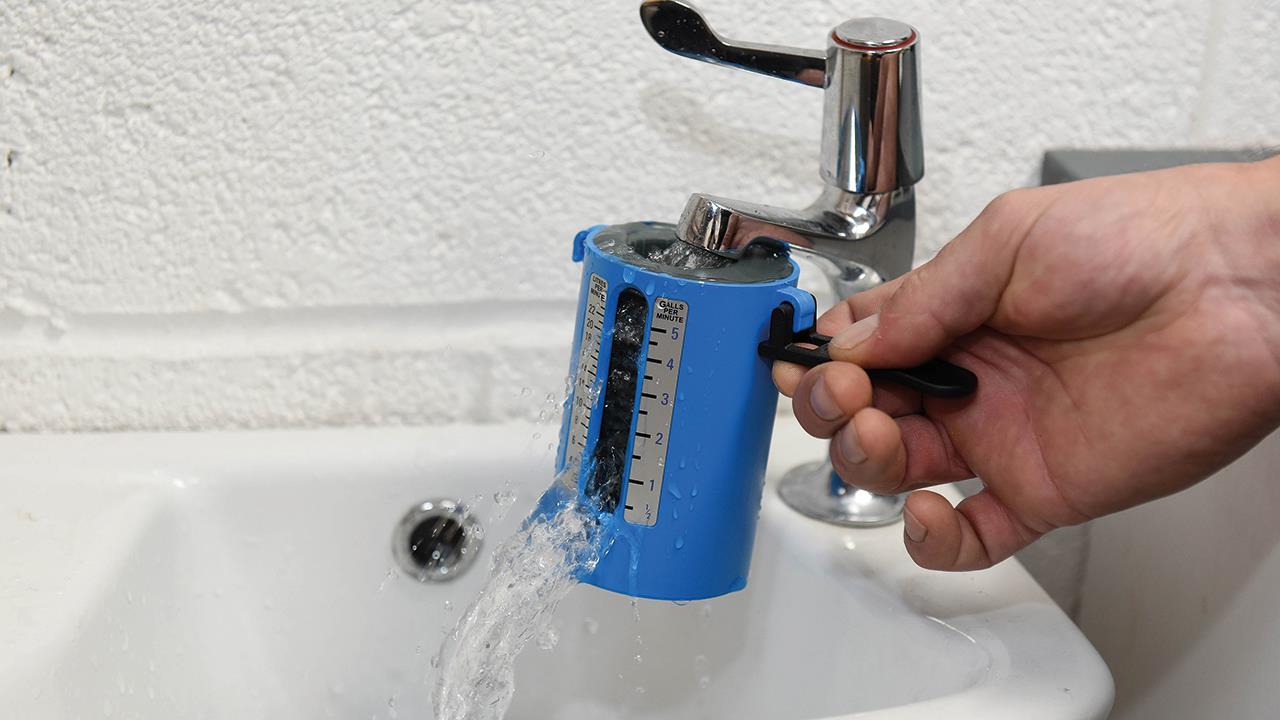

Both low and high water pressure can present problems in terms of performance. Jerry Whiteley, Technical Manager at the Chartered Institute of Plumbing and Heating Engineering (CIPHE), explains the challenges posed by extremes in water pressure and outlines what installers can do to reduce issues.
The service standard set out by The Water Services Regulation Authority (Ofwat), requires water pressure to be between a minimum of 0.7 to a maximum of 1.5 bar. If systems fall below 1 bar, this is considered low pressure and anything above this is on the higher pressure side. Pressure will differ for a variety of reasons, but avoiding extremes in either too high or too low water pressure should be the goal.
Low pressure
Low water pressure can be caused by area supply issues, such as a burst pipe or emergency repairs. Therefore, if a property hasn’t experienced water pressure issues before, this could be the reason why. If the issue is a longer-term problem, this could be due to poor system design, the diameter of the pipes not being correct, or even down to geographical or housing type factors.
For example, in extreme cases, multiple storey properties with insufficient mains water pressure can result in the top floors of the property not having a water supply at all. In regions with a hilly terrain or more built-up areas with taller buildings, water may need to be pumped at higher pressure.
High pressure
High water pressure can be equally as problematic as low pressure. Noises in the pipework, which can happen as a result of the water moving too quickly through the pipes, is a common indicator of high pressure systems and cause of complaints from homeowners. A side effect of this high pressure is not only the undesirable noise, but faster wear and tear.
Too high water pressure can erode components, potentially shortening the lifespan of appliances and causing damage. Damaged plumbing fixtures may result in leaks and pipe bursts, which are not only detrimental to the system, but also costly to the consumer should they need to call in an emergency repair.
What to do?
It is necessary to reduce water pressure somehow if it is too high, and to increase pressure if it is too low. Make sure to measure the water pressure to get an accurate reading of the supply to the home and to check the local water supply before attempting to resolve pressure concerns and before any installation.
In low pressure scenarios, the installation of a booster pump is often a straightforward solution to increase water pressure by forcing the water to flow through the pipes at a faster rate. It is worth keeping in mind that water authorities limit this to 12l per minute, anything more and you must notify them beforehand.
Alternatively, an accumulator tank which stores cold water can be installed. An accumulator gathers water during low demand periods, for example overnight, and holds the volume of water under boosted pressure until it is required.
Generally high pressure properties can be an easier fix than the low pressure counterpart. A pressure reducing valve installed on the main water supply pipe, for example, can help to regulate the water pressure as desired.
Changing the pressure
In some instances, it may be necessary to convert a system from low pressure to high pressure. A common misjudgement that installers make is forgetting that the pipework is designed for low pressure.
Connecting to an existing low pressure system is likely to result in poor water supply and poor quality, leading to a system design rethink. It is important to be aware that changing to higher pressure might identify weak joints and cause water damage.
Installers will often be the first port of call for homeowners experiencing water pressure issues, and will rely on qualified plumbing and heating engineers to help to resolve any problems. To support installers with technical issues, including water pressure, the CIPHE can offer members information and assistance across an array of plumbing and heating topics
If you'd like to keep up-to-date with the latest developments in the heating and plumbing industry, why not subscribe to our weekly newsletters? Just click the button below and you can ensure all the latest industry news and new product information lands in your inbox every week.